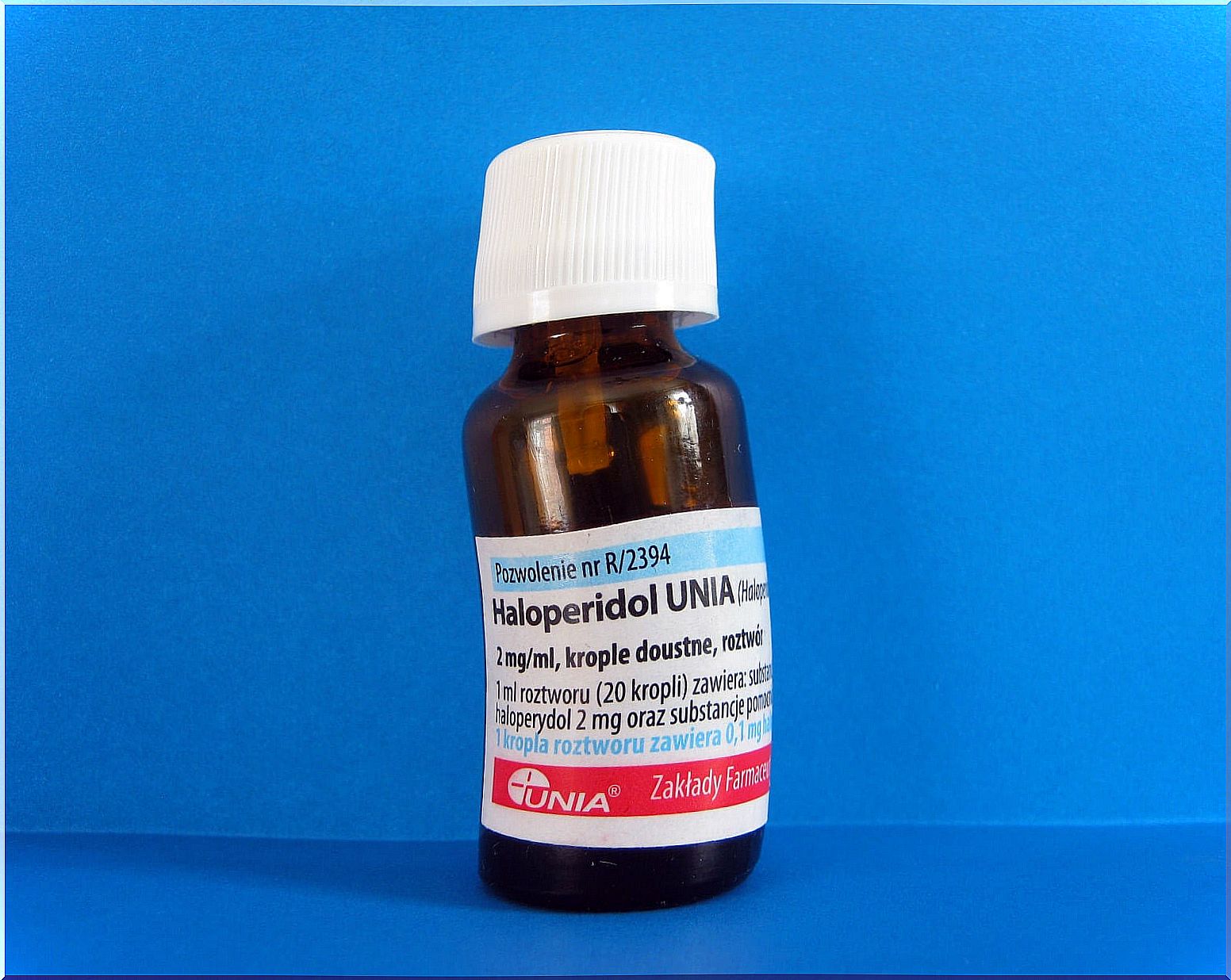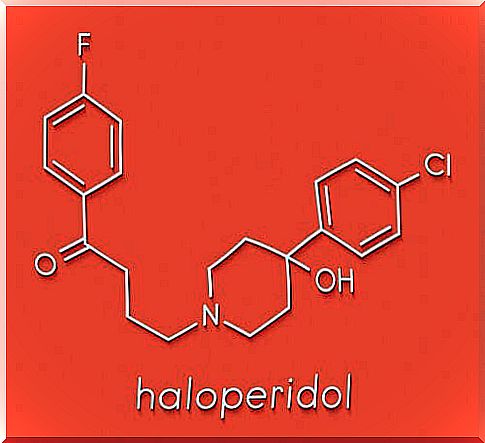Haloperidol: What Is It And What Is It Used For?

Haloperidol is an antipsychotic or neuroleptic drug. Due to its chemical structure, it is included in the group of butyrophenones. It was discovered in 1958 by Paul Janssen. It belongs to the typical antipsychotics. Therefore, it is useful in treating the positive symptoms of schizophrenia. Some of these are, for example: hallucinations, delusions or agitation.
It is a depressant agent of the central nervous system with sedative effect. Thus, it causes powerful motor sedation. This effect is used to combat states of agitation and aggressiveness.
What is haloperidol used for?
Haloperidol has many different indications on its technical sheet. It can be used in both adults and children. Basically, it is used as an antipsychotic in the treatment of schizophrenia and also in other psychotic and agitated states.
In adults over 18 years of age, haloperidol is indicated for the treatment of:
- Schizophrenia.
- Confusional syndrome that does not respond to non-drug therapies.
- Manic episodes associated with bipolar disorder.
- Psychomotor agitation associated with psychotic disorders.
- Aggression and psychotic symptoms in patients with Alzheimer’s dementia and vascular dementia.
- Tic disorders that do not respond to other types of treatments; including Gilles de la Tourette syndrome.
- Huntington’s chorea that does not respond to other treatments.

In pediatric patients it is used as long as other treatments cannot be used ; Either because they do not respond to them or they are not tolerated. In these cases, haloperidol is indicated in:
- Schizophrenia in adolescents aged 13 to 17 years.
- Aggression in children and adolescents from 6 to 17 years old with autism or developmental disorders.
- Tic disorders, including Gilles de la Tourette syndrome, in children and adolescents 10 to 17 years of age.
Additionally, haloperidol is being studied for the prevention of delirium. Low doses of this drug appear to be helpful in reducing the incidence of delirium in high-risk patients; as well as in patients who are going to be operated.
Haloperidol is also used to prevent nausea and vomiting. It is useful in nausea and vomiting produced after an operation and also in those associated with chemotherapy. Various studies ensure its efficacy and safety for this use.
Mechanism of action
Haloperidol is a potent dopamine receptor antagonist. It works by non-selectively blocking central D2 receptors. It also has a low antagonist activity on alpha-1 adrenergic receptors.
By blocking the dopamine pathway, it decreases excess dopamine in the brain. Thus, haloperidol suppresses delusions and hallucinations. It also produces a certain psychomotor sedation, useful in some of its indications.
Side effects
Haloperidol, like almost all psychoactive drugs, has a number of unwanted effects. These are usually also related to the mechanism of action. In fact, most adverse reactions to haloperidol are due to blockage of dopamine in other systems. The most common side effects of haloperidol are:
- Extrapyramidal disorder.
- Insomnia.
- Agitation.
- Hyperkinesis
- Headache
Other less frequent adverse reactions that may also appear are:
- Psychotic disorder
- Depression.
- Weight gain.
- Shaking.
- Hypertonia
- Orthostatic hypotension.
- Dystonia
- Drowsiness.
- Urinary retention.
- Erectile dysfunction.
- Acne.
- Nausea and vomiting
- Visual impairment

It is not recommended for use with other antipsychotics. This is because it can increase the intensity of adverse reactions. Similarly, extrapyramidal effects can be enhanced.
A serious adverse reaction that can occur is neuroleptic malignant syndrome. It is not very frequent, but it is convenient to know it to be able to detect it in time. It usually occurs at the beginning of treatment. It causes muscle stiffness, high fever, arrhythmia, etc. Therefore, it is important to follow the doctor’s instructions. He is in charge of controlling the treatment, as well as assessing its effectiveness and possible risks.
Treatment should be started with a low dose. Later, this can be increased depending on the response and the needs of the patient, periodically evaluating the benefit-cost balance of the treatment. Furthermore, to avoid adverse effects, the dose should always be the lowest effective one.
Special care must be taken when used in elderly patients, as well as in children. In these cases, the dose must be adjusted. And, in addition, we must monitor the possible adverse effects that may appear.









